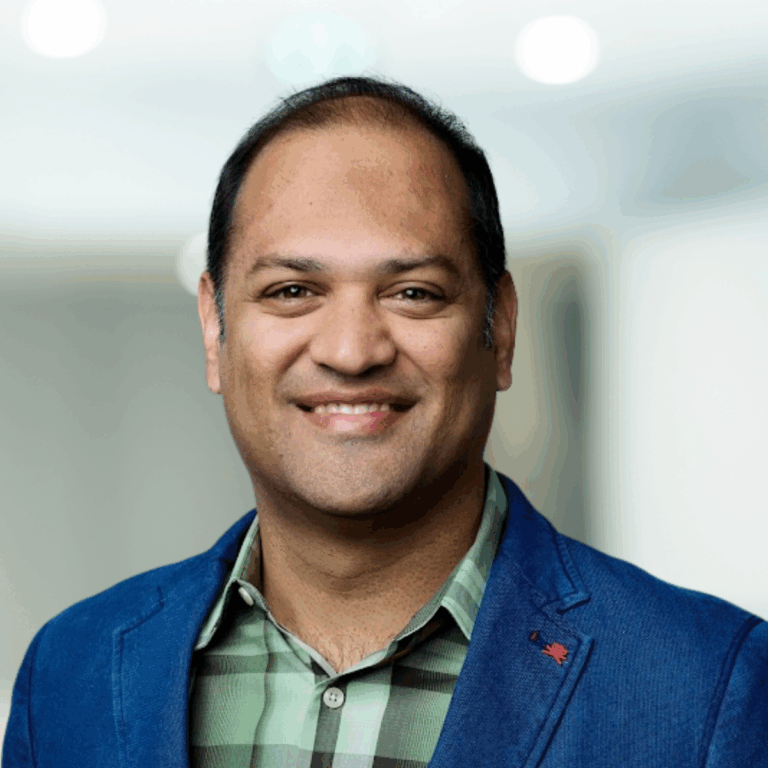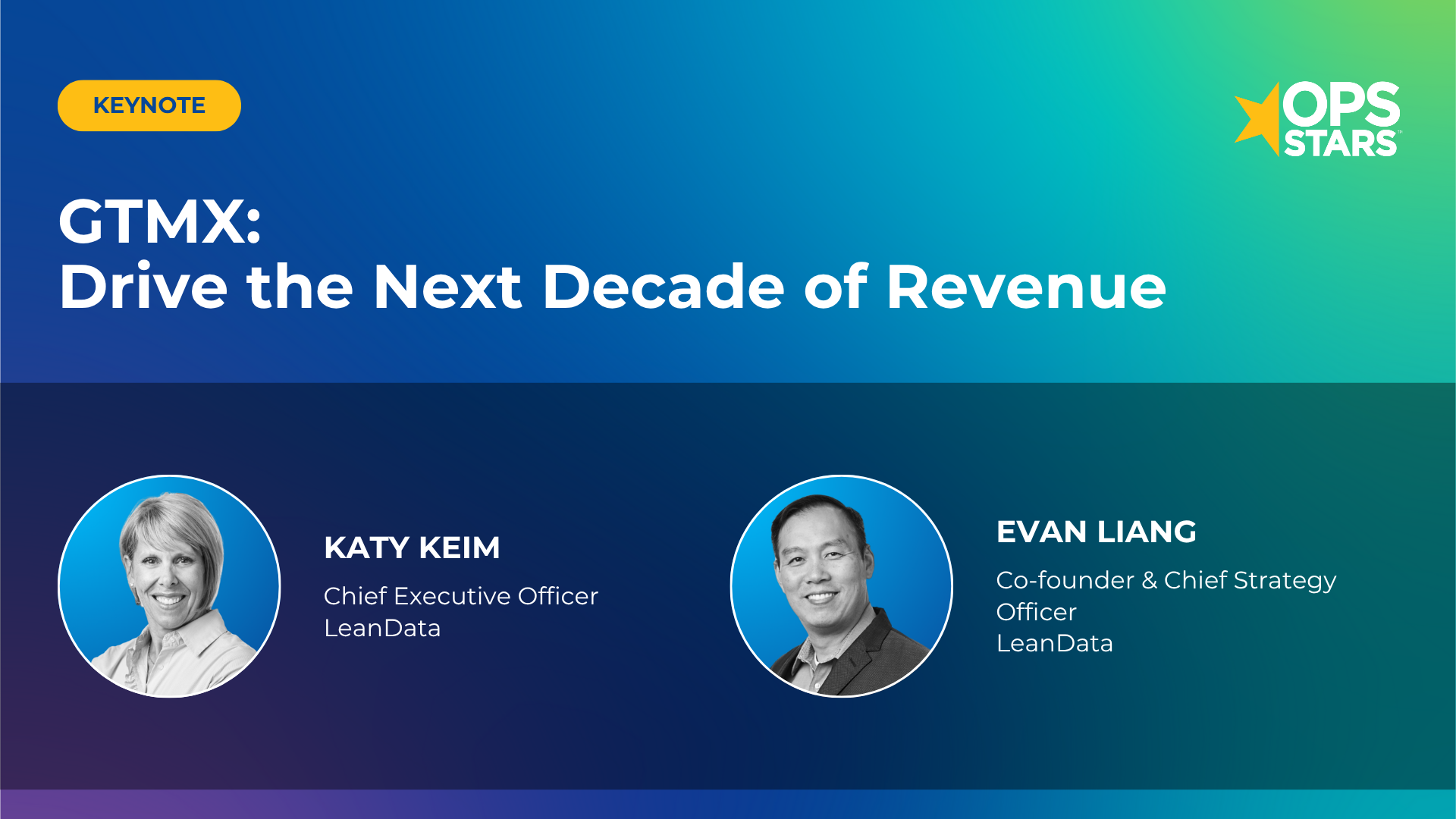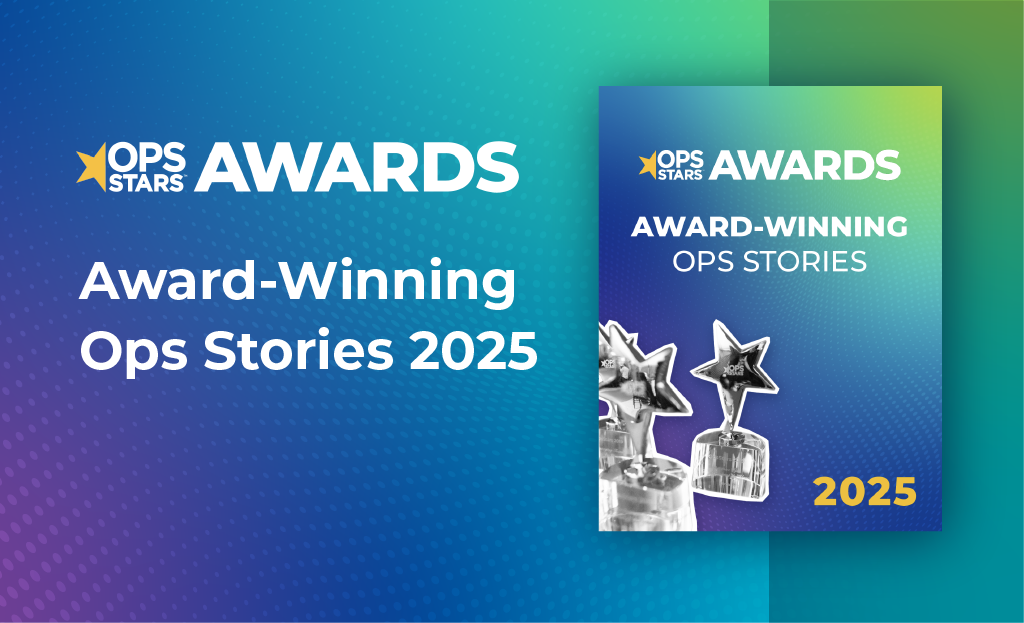Summary
In this OpsStars 2025 keynote, LeanData leaders outline how Ops Pros can navigate AI-era complexity with a buyer‑driven strategy, dynamic journeys, and an “enterprise nervous system” for sensing, thinking, and acting on signals. Ideal for RevOps, Marketing Ops, Sales Ops, and GTM leaders who want to translate efficiency into growth.

Key Takeaways
- Transition from leads and individuals to buying groups and the entire customer lifecycle.
- Prepare for a “signal explosion” and coordinate people and AI agents across all GTM systems.
- Replace linear funnels with dynamic buyer journeys, including renewals, upsells, and cross-sells.
- Focus on efficient growth: connecting operational improvements to pipeline, conversion, and revenue outcomes.
- Build an enterprise nervous system that can sense, think, and act on buying signals in real time.
Speakers
Katy Keim — Chief Executive Officer, LeanData
As CEO, Katy leads LeanData’s strategy to help GTM teams orchestrate buyer‑centric revenue processes.
Evan Liang — Co‑founder & Chief Strategy Officer, LeanData
Evan reflects on a decade of OpsStars and the rise of RevOps, framing the next cycle driven by AI.
Jim Bell — Chief Marketing Officer, LeanData
Jim sets the stage for the OpsStars program and highlights community, partners, and practical takeaways.
What You’ll Learn
Q: How should RevOps evolve in an AI-driven, buyer-led world?
A: A buyer-driven strategy focuses on buying groups rather than individual leads. It relies on an enterprise nervous system that aggregates signals, interprets buyer intent, and triggers the right human or AI-led actions. Replace static workflows with adaptive, outcome-based orchestration.
Q: What does “efficient growth” look like in practice?
A: Operational improvements must connect directly to revenue. Rethink routing, SLAs, and engagement models so speed and precision result in higher conversion, accelerated pipeline, and better retention. Instrument reporting that clearly shows these links.
Q: How do you future-proof GTM processes for the signal explosion?
A: Centralize and normalize buyer data, use no-code orchestration for flexibility, and ensure governance over AI agents. Design buyer journeys that align human actions and AI automation throughout the entire lifecycle.
Session Transcript
Jim Bell
Good morning, and welcome to OpsStars 2025! My name is Jim Bell, and I’m the Chief Marketing Officer at LeanData. I’ve been in this role for a little over a year, and much of that time I’ve spent traveling to meet many of you. I’ve been to Atlanta, Boston, Chicago, Dallas, Denver, Las Vegas—maybe three times—London twice, Seattle, Toronto, and probably a few more cities I’m forgetting. So thank you for finally coming to me here in San Francisco.
I’m really excited about OpsStars this year. We have a packed agenda for you, and just a bit of quick housekeeping: this is Stage One. Anything you see on the agenda in the Stage One column will happen here. You can scan the QR code on the back of your badge to see the agenda and map. Stage Two is just outside and to the right, and the workshops are downstairs with clear signage to guide you.
We’re thrilled about the speakers and content lined up today. I’d also like to thank our sponsors—if you’re in the room, please stand so people can find you later. Our Gold Sponsors are Clay, Demandbase, HG Insights, Qualified, and Informa TechTarget. And a round of applause also for our Silver Sponsors: 6sense, Expert.ai, Gong, Nooks, OpFocus, Spekit, SubscribeTango, and UserGems.
Thank you as well to our Service Sponsors. Our sponsors have amazing solutions, case studies, and swag, so please spend time visiting their booths. They’re partners in what we do—LeanData doesn’t exist in a vacuum, and we succeed because of this ecosystem.
Next, make sure you visit the LeanData Lounge. Our team is there to answer questions, talk through your challenges, and show you what’s next in the product.
And one final piece of advice: when you sit down in a session and don’t know anyone, resist the urge to pull out your phone and look busy. Be the person who says hello. Introduce yourself. My career was built on learning—and, frankly, stealing—great ideas from other people. There’s so much intelligence in this room. Connect with your peers, exchange insights, and learn something new.
When you find those great ideas, pick one or two that really stand out. Before you get back to your overflowing inbox or Slack notifications, write down your next step. Decide how you’ll take action on it. That’s how you grow your career—and that’s how our OpsStars Award winners have done it. They didn’t just listen; they built something from what they learned here.
With that, it’s my honor to introduce someone who really needs no introduction: the person who first sold me LeanData in 2015 and hired me in 2024—our Co-Founder and former CEO, Evan Liang.
Evan Liang
Thank you, Jim. It’s hard to believe—it’s been 10 years! That video gave me goosebumps and brought back so many great memories.
By a show of hands, how many of you have been to OpsStars before? That’s incredible. This event truly is for Ops, by Ops, and as we celebrate our 10th year, I want to thank all of you for being part of this journey. You’ve helped shape this community, this industry, and what Ops means in modern business.
When you hit a milestone like 10 years, it’s a good time to reflect—on where we started, what’s changed, and where we’re headed.
We began at a small restaurant called True Neman—probably about the size of this room—hosting just 100 people with a tiny idea: to create an event within Dreamforce focused on the operational leaders behind the scenes. Two years there, and then we grew. Anyone here who attended those early True Neman gatherings? A couple hands—amazing!
Sadly, that restaurant closed during COVID, but it reminds me that change is constant—and that’s been the theme of our industry too.
Looking back, we’ve seen huge evolution across three areas: people, process, and technology.
People: When we started, Ops often meant Sales Ops or Salesforce Admins. Over time, the role evolved into Revenue Operations—a true strategic function. Today, CROs and CEOs talk about RevOps as their most critical hire. That’s incredible progress.
Process: Ten years ago, we were obsessed with MQLs—Marketing Qualified Leads. Over time, the conversation shifted to accounts and buying groups. The movement from leads to accounts has been one of the biggest transformations in go-to-market strategy—and a big reason LeanData exists.
Technology: Back then, Salesforce was a data silo. Over the years, we’ve integrated systems, connected marketing automation, and broken down walls between departments. That integration gave rise to RevOps as a cross-functional discipline.
But if tech cycles run in 10-year waves, we’re entering the next one now—and it’s all about AI.
The last big shift was on-prem to cloud. This one is cloud to AI. The question is not if but how AI will reshape what we do in Ops.
This year’s OpsStars marks the kickoff of that next decade—one where AI redefines processes, people, and performance.
And with that, it’s my pleasure to introduce LeanData’s new CEO, Katy Keim, who’s going to lead us—and you—into the next generation of this incredible journey.
Katy Keim
Thank you, Evan. It’s such an honor to be here. I’ll admit, I’m channeling a little bit of nervousness into excitement as I follow in your footsteps.
First, I want to acknowledge something Evan didn’t mention—himself. Evan, you built this community and this company from the ground up. I take the responsibility of leading it into the next decade very seriously, and I want to thank you for your partnership and vision.
So, onward we go.
People keep asking me, “What will the next 10 years look like?” Honestly, that’s a funny question when the last 10 months have been this transformative. I don’t have all the answers, but I know one thing for sure: we’re not going back.
This is one of the most significant transformations we’ve ever seen. SaaS was about financial innovation—teaching people to buy software differently. Cloud was about access and infrastructure. But AI—this is different. It’s reshaping how we think, work, and grow.
If you were at Marc Benioff’s keynote yesterday, you probably heard the word agentic about 500 times. It’s everywhere—agentic processes, agentic systems. Salesforce had over 500 AI sessions this year alone.
So yes, AI is here. But the question isn’t if we’ll change—it’s how.
Raise your hand if you’re excited about AI. Great. Now raise your hand if you’re also a little anxious. That’s fair. You’re not alone.
Even Michael Dell said his company would be destroyed if they didn’t move aggressively toward AI. If the pioneers of the personal computer feel that pressure, imagine what the rest of us feel.
McKinsey recently reported that most companies struggle to scale AI—not because of technology, but because they lack the systems, strategy, governance, and talent to make it work. That’s where you come in.
To make AI real, you need to wire it into workflows, processes, and governance. That’s RevOps’ superpower—you’re the system builders. You’re the ones who think strategically about data, processes, and outcomes.
So, what’s changing?
We’re shifting from seller-led to buyer-driven. Buyers complete 70% of their research before they ever talk to a rep. They leave signals everywhere—intent data, engagement data, digital fingerprints—but not through our linear, seller-led funnels.
We’re also shifting from siloed systems to connected ecosystems. Every department has its own stack—Sales, Marketing, CS—and now we’re adding AI-native apps on top of that. The stack isn’t simplifying; it’s becoming exponentially more complex. But you’re built for that.
Companies like Rockwell, Veeam, and Uber are already adapting—connecting AI-driven workflows, moving from Dynamics to Salesforce, and implementing buying-group orchestration. They’re showing what the future looks like: multi-persona engagement, cross-functional data flow, and measurable business impact.
The next big shift is in focus. The last decade was about efficiency. The next one is about efficient growth. Efficiency for its own sake isn’t enough—you must show how it drives pipeline, win rates, and revenue.
Ops leaders like ExtraHop, Samsara, and Meltwater are already doing this. They’re proving that process excellence isn’t just operational—it’s strategic.
And finally, we need to evolve from brawn to brains—from reactive to proactive. Ops shouldn’t just respond to business problems; we should design the systems that prevent them.
So where do we go from here?
I believe the future of RevOps is building the enterprise nervous system.
Think of it this way:
Sense — Capture the signals across the buyer journey.
Think — Analyze and interpret them intelligently.
Act — Automate and orchestrate the right responses across people, systems, and agents.
That’s the foundation of Intelligent Go-to-Market Orchestration.
LeanData’s vision is to help you do exactly that: capture critical buying signals, connect them across journeys and personas, and orchestrate the right actions—human or agentic—to drive growth.
We’re building this with you, not just for you.
Thank you for being with us these last 10 years. Let’s go build the next decade of Intelligent GTM Orchestration—together.
Jim Bell
Thank you, Katy.
I once met a documentary filmmaker who said, “Leadership is about inviting others to join you on a journey to do something amazing together.”
That’s exactly what we’re doing here. We’re inviting you to come with us—to shape this next chapter for Ops and for LeanData.
Please join me in congratulating our OpsStars Award winners from last night. If you’re in the room, stand up so we can recognize you!
To everyone else—connect with these leaders, learn from them, and maybe next year, we’ll see you standing up here.
Thank you all for being here at OpsStars 2025. Enjoy the sessions, connect with your peers, and let’s build the future—together.









